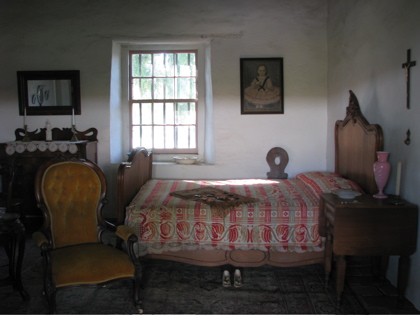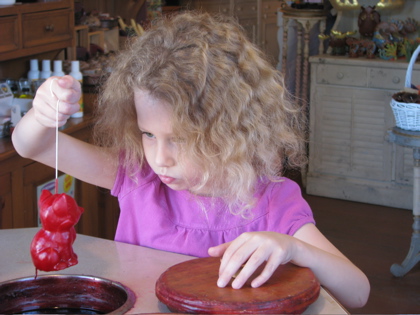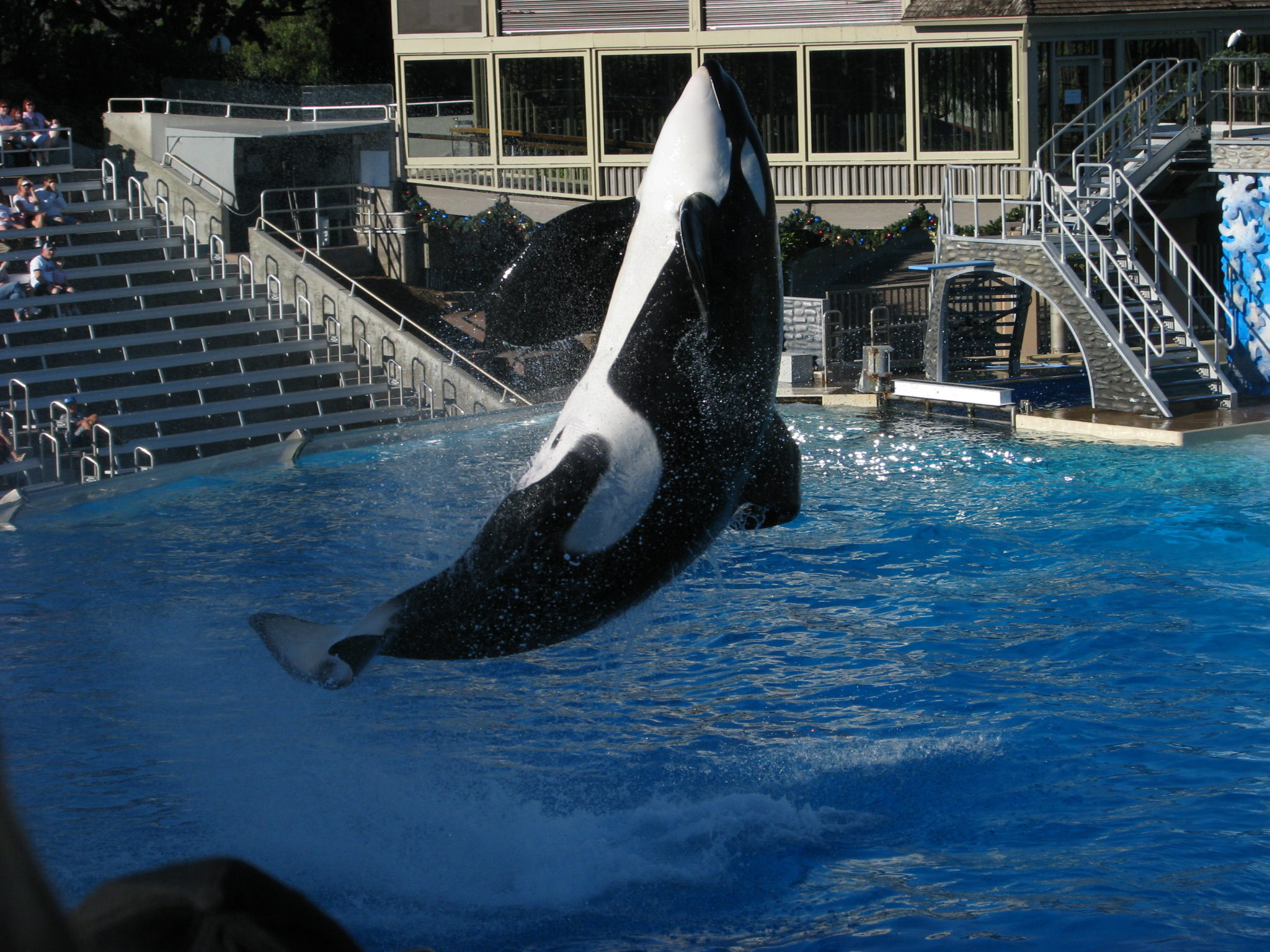We’ve been meaning to visit all the Balboa Park museums since our
arrival in San Diego, but the zoo and the aquarium kept wooing us back
for repeat visits this summer, hogging our outing time. Then a couple
of weeks ago, Alice discovered an incredible art museum
near her San Fran abode, and her stories of close encounters with works
by Rembrandt, Cassatt, and Monet fired me up to move "take kids to San
Diego Museum of Art" from the Sometime list to the Do It Now one.
Yesterday, as I mentioned in my somewhat grumbly tale at Lilting House, was the monthly Free Tuesday there, so off we went.
Lesson number one: You might think you are being all kinds of clever
and responsible by spending the morning cleaning house before packing
up the kids for the big museum outing—"We’ll come home to a nice clean
house, won’t that be nice?"—but you are wrong. The parking lot police
officer took time out from writing tickets for cars illegally parked in
the handicapped spaces to tell me, jovially, that you have to arrive
before 10 a.m. if you want to get a (legal) parking spot. It was 11:45
when he was telling me this, so: whoops.
He very kindly told me where to go to find a parking lot I could
drive around in for 25 minutes hunting for a space. I took his advice,
and figured out all on my own how to stalk a pedestrian strolling into
the lot with keys jangling, suggesting the possibility that she was
returning to her car and therefore about to vacate a space. The space
was approximately four inches wider than my minivan, so I spent another
18 minutes backing-and-filling in order to get into it.
By this time the kids were fed up with Balboa Park and asked if we
could go home. I laughed like a crazy person and told them if they
thought I was going to give up this parking space, EVER, they were
sorely mistaken. "We are going to LIVE here from now on," I told them.
"Forever. I worked too hard for this space. I am never going to leave
it, you can bury me here. Hold on, I need to call Daddy and give him
our new address. Honey, we now reside at Space #16, The Lot Behind
Spreckles Organ Pavilion, Balboa Park, San Diego, I don’t know the zip
code yet. Can you change the mail forwarding? Because I can’t leave
this spot to go to the Post Office."
Then one of the kids pointed out the sign that said the lot closes at 6 p.m.
"Shoot," I sighed. "We’d better go see that museum before they kick us out."

The facade of the museum is currently hidden behind plywood and tarps,
presumably for a restoration of some kind, but you scarcely notice that
as you herd your children up the stroller ramp, because your gaze is
transfixed by the lovely pensive face of the Young Shepherdess, the gem
of the museum’s collection. Painted in 1895 by William Bougereau, the
Shepherdess is arguably the gallery’s most beloved work of art. My
daughters want to be her (because she is pretty, goes barefoot, and has
sheep) and were desperately eager to see her.
Turns out she is off gallivanting around the country right now. A
museum guard told me (very chatty these Balboa Park personnel are, and
don’t I appreciate it!) that the painting is making a U.S. tour this
summer. But she’ll be back in a few months, and that’s fine because it
will probably take me that long to find another parking space.
Instead of the Shepherdess, we visited Giverny.
Oh! Giverny! The word is magical. It whispers: Monet, poppies,
haystacks, light-streaked skies, picturesque laborers in wheat fields
drenched with sun. We made a beeline for the visiting exhibit, a large
collection of Impressionist works by the artists who congregated in the
little French painters’ colony during the late 1800s. They took their
easels out to the woods and fields in a golden frenzy of plein-air
painting. All right, the wall placard describing the exhibit didn’t say
anything about a frenzy per se, but it did talk a lot about plein-air
painting, a term whose pronunciation I managed to fake quite passably
but of whose definition I was ignorant until a kind-eyed Englishwoman
explained it to Jane.
She was quite a knowledgeable woman and shared many tidbits of
information with us as we strolled from painting to breathtaking
painting. Monet was everywhere, shimmering in leaf green and spruce
green, plummy shadows, frothy blues. Forget my parking space, I want to
live in one of those paintings.
I particularly liked the work of American Impressionist Theodore Robinson, about whom I probably ought to have known before but didn’t. (Oh look! I just realized he’s the same guy Elizabeth posted about a few days ago. Maybe that’s why his name jumped out at me.) We also
greatly admired the work of John Leslie Breck and Guy Rose. But it was
Monet who gave us the goosebumps. Jane and I could not believe we were
standing there in front of his actual paintings, a dozen of them at
least. I lost count. I was too occupied with counting the heads—and
more to the point, hands—of my own children. "Don’t touch the wall,
honey. Oh! And don’t point at the paintings. What if you accidentally
touched one! Good heavens! Oh! No, Wonderboy, don’t poke the nice
English lady. She’s your sisters’ only chance of having their questions
answered here because Mommy is distr—Oh! No, Beanie, you can’t eat
string cheese in an art museum!"
I do not pretend our outings are serene.
If I get a chance later, I will link to some of the paintings we got to look at. This one, Morning on the Seine Near Giverny (which looks washed out in every image I could find online but is in reality saturated with color so rich it’s like light poured itself into pigment) is the one I mentioned in yesterday’s Lilting House post, the print Rose fell in love with in the bookstore. There were other paintings we liked even better: I think all of us favored the golden haystack ones (and there were many—mighty fond of painting haystacks were those Impressionists) over the misty river paintings.
Not that there’s any reason to choose. The world is an art gallery nowadays. I foresee many virtual pilgrimages to Giverny in our future. As there have been in our past—Linnea in Monet’s Garden and Katie Meets the Impressionists have ranked highly in our book catalogue for many years.
After the Giverny exhibit, we toured several other galleries in the museum, encountering Goya, Renoir, O’Keefe, Warhol, Fra Angelico, and Giotto. We missed Picasso, Rembrandt, and Chagall, but we’ll be back.
As soon as I find parking.

























